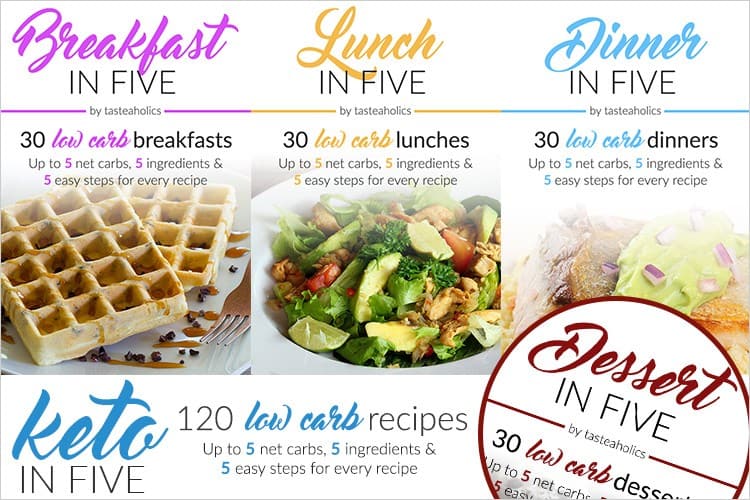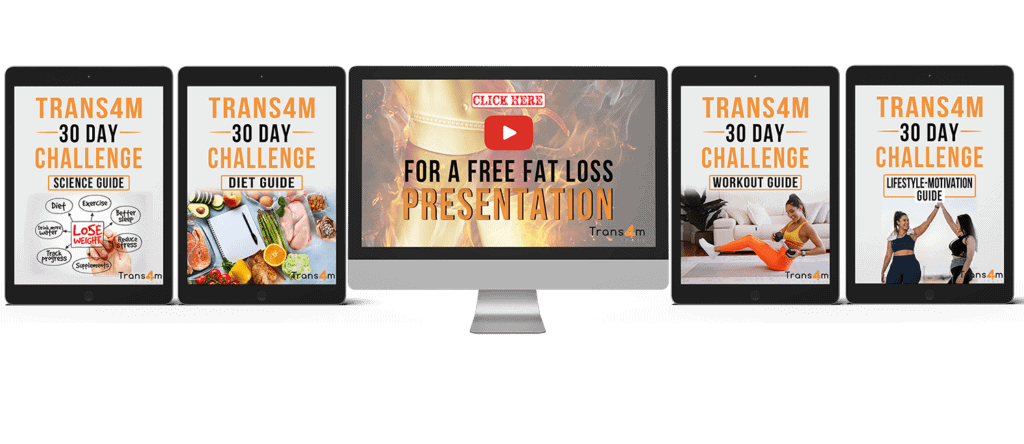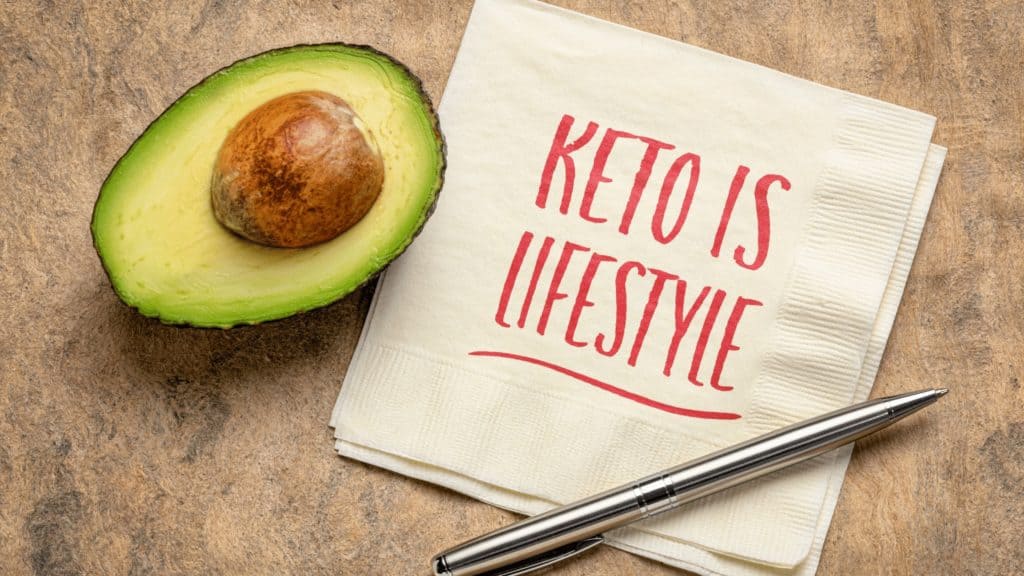
Ketogenic Diet | The Basics
The ketogenic diet, commonly referred to as the keto diet, is a low carbohydrate, high-fat diet that has many health benefits to the human body. Numerous studies conducted show that the Ketogenic diet can improve your health by helping you lose weight. Besides, a keto diet offers many benefits against epilepsy, cancer, Alzheimer’s disease, and diabetes. (a , b
, b , c
, c , d
, d )
)
If you are looking for the best beginner’s guide plus meal plan, you are in the right place. This article will go through the keto diet basics, a keto diet meal plan, and some frequently asked questions about the ketogenic diet.
The Ketogenic Diet Basics | What is the Keto Diet?
The keto diet is a high-fat, low carbohydrate diet having many similarities with other low carbohydrate diets such as the Atkins. This diet entails the drastic reduction of carbohydrate intake into your body instead of replacing it with fat. Since your body receives little carbohydrates, it enters a state of metabolism referred to as ketosis.
Upon achieving this state, your body gets exceptionally efficient in burning fats to produce energy. To supply energy to the brain, the human body converts fats into ketones in the liver. Keto diets can lead to a substantial reduction in your body’s insulin and blood sugar levels. Low blood sugar and insulin levels and increased ketones are highly beneficial to your body. (1, 2, 3)
There are many various types of the ketogenic diet. Below are some of these types:
-
Standard Ketogenic Diet (S.K.D.)
This diet is a high fat, very low carb, and moderate protein diet. The ratio of its content is 70% fat, 10% carbohydrate, and 20% protein.
is a high fat, very low carb, and moderate protein diet. The ratio of its content is 70% fat, 10% carbohydrate, and 20% protein.
-
High Protein Ketogenic Diet
This diet is a high fat, very low carb, and slightly more protein diet as compared to the standard ketogenic diet. Its contents have a ratio of 60% fat, 5% carbohydrate, and 35% protein.
diet as compared to the standard ketogenic diet. Its contents have a ratio of 60% fat, 5% carbohydrate, and 35% protein.
-
Targeted Ketogenic Diet (T.K.D.)
It is a type of ketogenic diet that enables you to add the content of carbohydrates around workouts.
-
Cyclical Ketogenic Diet (C.K.D.)
It is a diet that comprises periods of taking in high carb levels, for example, following up five ketogenic days with two high carb days.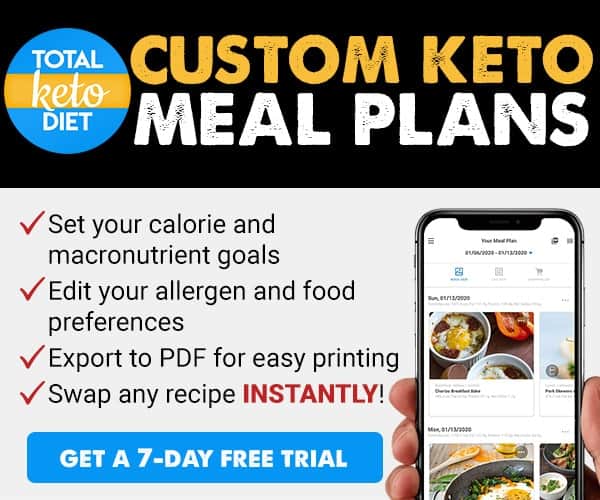
Nonetheless, scientists have only conducted extensive studies on the high and standard protein keto diets. Cyclical and targeted keto diets are quite advanced methods and are mainly used by bodybuilders and athletes.
Since the standard ketogenic diet is the most recommended and most researched, this article’s information will mostly apply to the standard ketogenic diet, even though these principles apply to other types.
What is Ketosis?
It is a metabolic state where instead of your body using carbs for fuel, it uses fat. It happens when you reduce your carbohydrate consumption significantly, limiting the supply of glucose (sugar) in your body.
The most effective way to enter the metabolic state of ketosis is by following a ketogenic diet. Normally, it involves limiting the amount of carbohydrates you consume to about 20 to 50 grams in a day and instead consuming healthy oils, nuts, meat, eggs, fish, and more fatty foods. (4)
Furthermore, it is crucial to moderate the rate at which you consume proteins. If you consume proteins in high amounts, your body will convert them to glucose, thus slowing your transition into the state of metabolism. (5)
Another brilliant way to achieve the state of ketosis faster is by practicing intermittent fasting . You can practice intermittent fasting in many different forms, but the most popular method is limiting your food consumption to about 8 hours in a day and fasting for the other 16 hours.
. You can practice intermittent fasting in many different forms, but the most popular method is limiting your food consumption to about 8 hours in a day and fasting for the other 16 hours.
A medical professional can conduct breath, urine, or blood tests to determine whether your body has entered the metabolic state of ketosis. These tests measure the amount of ketones that your body produces. Certain symptoms can show your body has entered ketosis, and they include decreased appetite or hunger, frequent urination, increased thirst, dry mouth, among others. (6 )
)
One of the most effective ways of losing weight is by being on a ketogenic diet. (7 , 8
, 8 , 9, 10, 11,)
, 9, 10, 11,)
Besides, it lowers the risk factors for diseases. Research shows that a keto diet is as effective as a low-fat diet when it comes to weight loss. (12, 13, 14)
Moreover, a keto diet is so filling that you are able to shed weight without counting calories or tracking your food intake. (15)
A 13-study review showed that a ketogenic diet with very low carbohydrate content is slightly more effective for losing weight in the long-term as compared to a low-fat diet. In addition, this diet also leads to reductions in triglyceride and diastolic blood pressure levels.
Another study conducted on 34 older adults showed that if you follow a keto diet for eight consecutive weeks, you will lose body fat nearly five times than if you were to follow a low-fat diet and often happens with less hunger.
conducted on 34 older adults showed that if you follow a keto diet for eight consecutive weeks, you will lose body fat nearly five times than if you were to follow a low-fat diet and often happens with less hunger.
Besides, improved insulin sensitivity, lower blood sugar levels, and increased ketones may play a significant role. (16 , 17
, 17 )
)
Characteristics of diabetes are impaired insulin function , changes in metabolism, and high blood sugar. (18
, changes in metabolism, and high blood sugar. (18 )
)
Following a keto diet is beneficial as it helps lose excess fat in your body and may help reduces the risk of getting metabolic syndrome, prediabetes, and type 2 diabetes. (19 , 20, 21, 22)
, 20, 21, 22)
A study showed that a keto diet could help improve the sensitivity of insulin by a staggering 75%. (23
showed that a keto diet could help improve the sensitivity of insulin by a staggering 75%. (23 )
)
Another study conducted on women having type 2 diabetes showed that after they followed a keto diet for 90 days, their hemoglobin A1C levels reduced significantly. This hemoglobin A1C level reduction is an indicator of long-term blood sugar management (24
conducted on women having type 2 diabetes showed that after they followed a keto diet for 90 days, their hemoglobin A1C levels reduced significantly. This hemoglobin A1C level reduction is an indicator of long-term blood sugar management (24 ).
).
A study conducted on 349 people having type 2 diabetes showed that those who followed a keto diet for two years lost an average weight of 26.2 lb. (11.9kg). When considering the link between weight and type 2 diabetes, this is a significant benefit. (25, 26)
Furthermore, these individuals were able to minimize the use of certain medications to control blood sugar levels and experienced an improvement in their blood sugar management. (27)
Initially, the keto diet was a tool for treating some neurological diseases such as epilepsy. However, in recent years, scientists have discovered other health benefits of the diet that are effective for many various health conditions. These conditions include:
- Epilepsy
Scientists have conducted many types of research that show that the keto diet is responsible for reducing seizures in children who have epilepsy. (28 )
)
- Brain Injuries
Some researchers suggest that there is an improvement in the outcomes of traumatic brain injuries upon following the ketogenic diet. (29 )
)
- Polycystic Ovary Syndrome
There is a significant reduction in insulin body levels upon following a keto diet. The levels of insulin in the body play a critical role in polycystic ovary syndrome. (30 , 31
, 31 )
)
- Heart disease
A ketogenic diet is capable of improving risk factors like blood pressure, blood sugar, HDL cholesterol levels, body fat , among others. (32
, among others. (32 , 33
, 33 )
)
- Alzheimer Disease
A ketogenic diet can help minimize Alzheimer’s disease symptoms, thus slowing the disease progression. (34, 35, 36)
- Parkinson’s Disease
Even though there isn’t much information on the effects of a ketogenic diet, a study showed that it helped improve Parkinson’s disease symptoms. (37 )
)
- Cancer
Since the keto diet helps slow the growth of tumors, scientists are currently exploring it as an additional treatment for people suffering from different types of cancer. (38 , 39
, 39 , 40
, 40 )
)
Nonetheless, it is crucial to keep in mind that the research conducted on these areas is not conclusive.
It is vital to limit the intake of foods having high carbohydrates content.
Below is a comprehensive list of the foods that you should eliminate or reduce when you are on a keto diet:
- Alcohol: mixed drinks, wine, beer, and liquor
- Low diet or fat products: condiments, salad dressings, low-fat mayonnaise, etc.
- Diet foods that are sugar-free: sweeteners, syrups, desserts, sugar-free candies, puddings, etc.
- Sugary foods: soda, candy, fruit juice, ice cream, smoothies, cakes, etc.
- Fruit: every fruit, an exception to this is a small portion of berries such as strawberry
- Grains or Starches: pasta, wheat-based products, rice, cereal, etc.
- Some sauces or condiments: honey mustard, ketchup, barbecues sauce, teriyaki sauce, etc.
- Root tubers and vegetables: carrots, parsnips, sweet potatoes, potatoes, etc.
- Unhealthy fats: mayonnaise, processed vegetable oils, etc.
- Beans or Legumes: lentils, kidney beans, chickpeas, peas, etc.
Instead, focus more on incorporating these foods into your meals:
- Healthy oils: extra virgin oil, coconut oil, and avocado oil
- Cream and butter: heavy cream and grass-fed butter
- Cheese: unprocessed types of cheeses such as mozzarella, cheddar, blue, goat, or cream
- Fatty fish: mackerel, salmon, tuna, and trout
- Meat: chicken, steak, red meat, bacon, turkey, sausage, and ham
- Eggs: pastured or omega-3 whole eggs
- Low carb veggies: peppers, green veggies, onions, tomatoes, etc.
- Seeds and nuts: chia seeds, almonds, pumpkin seeds, walnuts, flaxseeds, etc.
- Condiments: herbs, salt, spices, and pepper
- Avocados: freshly made guacamole or whole avocados
For the best results, mostly base your diet on whole foods with a single ingredient.
[grwebform url=”https://app.getresponse.com/view_webform_v2.js?u=yhX3C&webforms_id=27445103″ css=”on” center=”off” center_margin=”200″/]
Below is a comprehensive one-week keto diet meal plan that will help you get started:
 Monday
Monday
For Breakfast: Have veggie and eggs muffins and tomatoes
For Lunch: Chicken salad with olive oil and feta cheese
For Dinner: Have asparagus and butter-cooked salmon.
Tuesday
For Breakfast: Have spinach omelet, tomato, egg, and basil
For Lunch: Have peanut butter, almond milk, spinach, stevia milkshake, or another ketogenic smoothie made with side sliced strawberries and cocoa powder.
For Dinner: Have salsa with cheese-shell tacos
Wednesday
For Breakfast: Have nut milk chia pudding, with a blackberry and coconut topping
For Lunch: Have avocado shrimp salad
For dinner: Have pork chops cooked made with Parmesan cheese, salad, and broccoli.
Thursday
For Breakfast: Have salsa, omelet, avocado, onion, pepper, and other spices
For Lunch: Have nuts, salsa, and celery sticks made with guacamole.
For Dinner: vegetable, pesto, and cream cheese-stuffed chicken
Friday
For Breakfast: Have sugar-free Greek, peanut butter, cocoa powder, whole milk yogurt mixed, and berries
For Lunch: Have ground beef lettuce-wrapped tacos mixed with sliced bell peppers
For Dinner: Have mixed vegetables and loaded cauliflower
Saturday
For breakfast: Have cream cheese pancakes mixed with blueberries and a side of grilled mushrooms
For lunch: Have beet “noodle” salad and zucchini
For Dinner: Have kale, toast pine nuts, and coconut oil-cooked white fish
Sunday
For Breakfast: Have fried eggs and mushrooms.
For Lunch: Have broccoli and low carb sesame chicken
For Dinner: Have spaghetti squash Bolognese
Note: It is good to rotate the veggies and meat in the long term because each type contains different nutrients and provides various health benefits. You can get tons of recipes from these lists: 101 healthy low carb recipes and a keto shopping list.
It is also worth noting that a ketogenic diet offers a variety of tasty and nutritious meals. Also, note that a ketogenic diet does not only contain fats and meat; it contains veggies, which are essential to the diet.
In the event you feel hungry in between meals, you can have some healthy, ketogenic snacks.
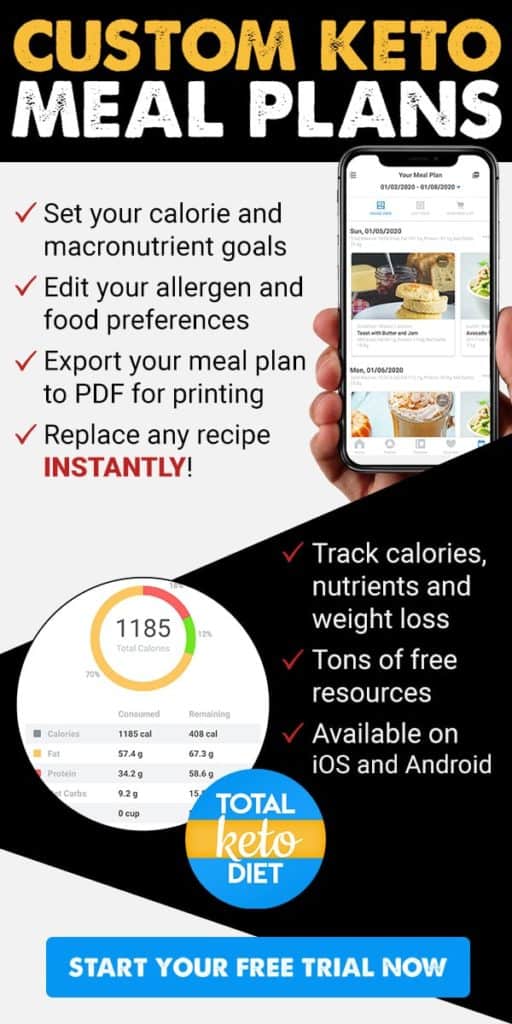 Below is a list of healthy ketogenic snacks:
Below is a list of healthy ketogenic snacks:
- Cheese
- Olives
- Fatty meat or fish
- A handful of nuts and seeds
- Keto sushi bites
- Keto-friendly snack bars
- 90% dark chocolate
- One or two deviled or hard-boiled eggs
- Guacamole and bell pepper
- Nut butter, full-fat Greek yogurt, and cocoa powder
- Celery with guacamole and salsa
- Plain cottage cheese and strawberries
- Fat bombs
- Beef jerky
- Smaller portions of leftover meat.
In short, you can have great ketogenic snacks by taking pieces of meat, olives, boiled eggs, nuts, dark chocolate, raw vegetables, or cheese.
Tips and Tricks to Help You Get Started with A Ketogenic Diet
Getting started on a ketogenic diet can be tough. However, I will get you some hacks to help you transition into this diet.
- You can begin by researching and making yourself familiar with food labels and creating a habit of checking the labels for the grams of fat, fiber, and carbs in the foods to know how to fit your much-loved foods in your diet.
- You should also plan out your meals in advance. It can be beneficial and also useful if you want to save time throughout the week.
- Use apps, cookbooks, food blogs, websites, and other reading material that offer keto-friendly meal ideas and recipes. You can use this information to build your custom menu.
- You can also use special meal delivery services that offer keto-friendly food options. It can be an easy and convenient way of enjoying keto meals at home.
- Consider bringing your keto-friendly foods to family and social gatherings and visits. Doing this enables you to curb cravings and stick to your ketogenic meal plan.
- You can also use healthy frozen ketogenic meals when you are short on time.
Are you switching to a ketogenic diet? Don’t stress so much. Nowadays, there are restaurants that offer keto-friendly meals. Most restaurants will offer fish or meat-based dishes. Ordering these ketogenic dishes can help ensure that you stick to your meal plan. When ordering, ensure that you replace any high-carb foods with extra veggies. You can also go for egg, bacon, or pork-based foods such as omelets or bacon.
You can opt for another keto favorite bun-less burger in restaurants or when ordering. Here, it would be best if you replaced the fries with veggies, then add either an avocado, eggs, bacon, or cheese to the meal.
You can easily enjoy a keto meal in Mexican restaurants by ordering any meat type with guacamole, extra cheese, salsa, and sour cream. You can then have berries with cream or mixed cheese board for dessert.
Does A Keto Diet Have Any Side Effects?
Although a keto diet is safe for most healthy people, there might be some initial side effects before your body adapts to the diet. There exists some anecdotal evidence showing some of these effects, which are collectively known as keto flu (41). However, reports indicate that the keto flu usually subsides within a few days.
(41). However, reports indicate that the keto flu usually subsides within a few days.
The known symptoms of keto flu include diarrhea, vomiting, and constipation (42 ). Other symptoms include:
). Other symptoms include:
- Increase hunger
- Sleeplessness
- Nausea
- Poor mental function
- Reduced body energy
- Decreased exercise performance
- Discomfort during digestion
You can minimize the effects of the keto flu; you can begin by regularly trying a low card diet for the first few weeks before moving on with a full keto diet plan. By doing this, you will train your body to burn fat for energy before taking on a full keto diet.
Research has also shown that a ketogenic diet at times can lead to mineral imbalance and water loss from your body. You can remedy this by adding extra salt to your diet and taking mineral supplements. I recommend talking to a doctor first about your nutrition needs before getting started with a ketogenic diet.
I would also recommend that you try eating until you’re full during the first few weeks of trying a keto diet. It will help you avoid calorie restrictions. A ketogenic diet’s goal is to induce weight loss without having to intentionally restrict your calorie intake.
In the long term, a keto diet may have some negative effects on the body, including some of these risks:
on the body, including some of these risks:
- Low blood proteins
- Kidney stones
- Extra liver fat
- Micronutrients deficiencies
It is also worth noting that Sodium-glucose cotransporter 2 (SGLT2), a type of medication for type 2 diabetes, is known to increase the risk of contracting diabetic ketoacidosis. Diabetic ketoacidosis is a severe condition that results in an increase in blood acidity. It is best for anyone under SGLT2 medication to avoid the keto diet (43, 44).
More research continues to be done on the safety of the keto diet and its long-term effects. It is best to keep your doctor in the loop about your eating plan and diet to receive a professional guide to making the right choices.
What are The Best Supplements for Someone Following the Keto Diet?
Before diving into the different supplements you can use, you should know that no supplement is required for a keto diet. However, the supplements can be useful and might come in handy, boosting your energy and health. The nest supplements out there are:
- MCT oil: You can add MCT oil to yogurt or other drinks. It helps boost ketone levels in the body. You can shop for MCT oil online
 . (45, 46)
. (45, 46) - Caffeine: Caffeine is beneficial for fat loss, and performance, and energy-boosting. (47)
- Minerals: Minerals and added salt can come in handy during the first few weeks of introducing the body to the keto diet. It helps counter mineral and water deficiency and imbalance in the body. (48)
- Creatine: Creatine has many health benefits to the body. It helps boost strength and performance too. It is best if you intend to combine a keto diet with exercise. (49)
- Exogenous Ketones: Exogenous ketones aids in boosting the body’s ketone levels. (50)
- Whey: Whey is an essential supplement, especially if you want to increase your protein intake during a keto diet. Simply add a half scoop of whey into your yogurt or shakes. You can check out Protein powder
 online.
online. - We have a list of Supplements that work for weight loss in a blog post here
 .
.
Common F.A.Q.s regarding a ketogenic diet
-
Can I ever eat carbs again?
The answer is yes. Absolutely. However, it is essential to reduce the amount of carbs you take at first. After the first couple of months or so, you can occasionally eat carbs. However, resume your keto meal plan immediately after.
-
Do I lose muscle?
Generally, you risk losing muscle on any diet. However, if you maintain your protein intake, and high levels of ketone help minimize muscle loss, especially if you lift weights. (51, 52)
-
Can I build muscle on the Keto Diet?
Yes, you can, but not as well as you would on a moderate carb diet (53 , 54
, 54 ). You can read this article
). You can read this article for more details about the keto diet and exercise performance.
for more details about the keto diet and exercise performance.
-
How much protein can I eat?
Your protein intake should be moderate because a high level will spike insulin levels which lower ketones. The upper limit to protein intake should be 35% of the total calorie intake.
-
What if I’m constantly fatigued, tired, and weak?
Fatigue can be a result of your body not being in full ketosis or failure to utilize fats or ketones effectively. You can counter this by lowering your carb intake and supplementing with MCT oil or ketones. (55, 56)
-
Why does my urine smell fruity?
Relax. It is only due to the excretion of by-products created during ketosis (57).
-
My breath smells, and what can I do about it?
Don’t be alarmed. It is a common side effect. You can solve it by drinking naturally flavored water or chewing sugar-free gum.
-
Is ketosis dangerous?
Often, people confuse ketosis with ketoacidosis. The latter is dangerous. On the contrary, ketosis is safe for healthy people. However, you should talk to your doctor before starting any new diet.
-
I have diarrhea and digestion issues. What do I do?
These are common side effects that subside after 3-4 weeks. If it exceeds that period, try increasing your fiber intake. (58, 59)
Final Thoughts
The Keto diet is great for overweight and diabetic people. It is also great for people aiming to boost their metabolic health. However, it is not recommended for athletes or those aiming to add weight or muscle. Besides, it might not be suitable for some people’s preferences and lifestyles. Therefore, it is best to consult your doctor about your diet plans and goals. Doing so will help determine if a keto diet is the best plan for you.
References
1. Bonnie J. Brehm, Randy J. Seeley, Stephen R. Daniels, and David A. D’Alessio, “A Randomized Trial Comparing a Very Low Carbohydrate Diet and a Calorie-Restricted Low Fat Diet on Body Weight and Cardiovascular Risk Factors in Healthy Women,” The Journal of Clinical Endocrinology & Metabolism: Vol 88, No 4; January 14, 2009. http://press.endocrine.org/doi/full/10.1210/jc.2002-021480.
2. Y. Wady Aude, MD; Arthur S. Agatston, MD; Francisco Lopez-Jimenez, MD, MSc; Eric H. Lieberman, MD; Marie Almon, MS, RD; Melinda Hansen, ARNP; Gerardo Rojas, MD; Gervasio A. Lamas, MD; Charles H. Hennekens, MD, DrPH, “The National Cholesterol Education Program Diet vs a Diet Lower in Carbohydrates and Higher in Protein and Monounsaturated Fat,” Arch Intern Med. 2004;164(19):2141-2146. http://archinte.jamanetwork.com/article.aspx?articleid=217514.
3. Aude, Y., A. S, Agatston, F. Lopez-Jimenez, et al. “The National Cholesterol Education Program Diet vs a Diet Lower in Carbohydrates and Higher in Protein and Monounsaturated Fat: A Randomized Trial.” JAMA Internal Medicine 164, no. 19 (2004): 2141–46. doi: 10.1001/archinte.164.19.2141. jamanetwork.com/journals/jamainternalmedicine/article-abstract/217514.
4. Freeman, J. M., E. P. Vining, D. J. Pillas, P. L. Pyzik, J. C. Casey, and L M. Kelly. “The Efficacy of the Ketogenic Diet-1998: A Prospective Evaluation of Intervention in 150 Children.” Pediatrics 102, no. 6 (December 1998): 1358–63. www.ncbi.nlm.nih.gov/pubmed/9832569/.
Recent Posts
How To Reverse Fatty Liver Disease Through Diet (7 Day Sample Diet)!
Is A Fatty Liver Reversible? Fatty Liver Diet Plan and Menu Here we tell you everything you need to know about the fatty liver diet, menu, recipes, tips, and tricks. Did you just get diagnosed...
How to lose weight for teenage girls. A complete guide with tips
Lose weight and surprise your friends with your transformation. Follow our exclusive weight loss tips, healthy diet, and workout routine for teenage girls-all backed by science and recommended by...


